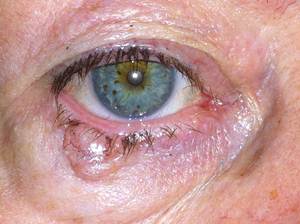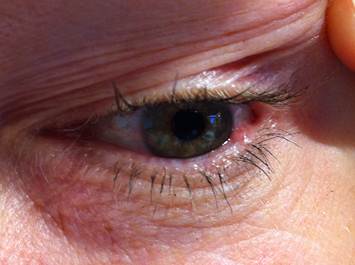CHALAZION or MEIBOMIAN CYST
Both ‘chalazions’ and the commonly known ‘stye’ are very similar lumps which occur on the eyelid.
A chalazion is a blocked up, inflamed meibomian gland. Your meibomian glands are located in your eyelids. They produce an oily secretion which slows the evaporation of your tear film. They have tiny pin-point openings along the length of your eyelids, behind the line of your eyelashes. Sometimes a meibomian gland gets blocked up. It begins to swell and may become infected.
An infected gland resembles a boil-like swelling of the eyelid. It is treated with antibiotics, usually an ointment, sometimes as tablets. If it is about to burst, warm compresses can help the pus to come out.
Sometimes your ophthalmologist will lance the boil, under a local anaesthetic injection. Very often the infection rapidly disappears, but it may leave behind an unsightly lump. If this is big enough, it can easily be removed, again under a local anaesthetic injection.
A stye is an infection of an eyelash follicle. It resembles a yellow-headed spot. Antibiotic ointment is usually sufficient to get rid of a stye and prevents it spreading to other eyelashes.
In most cases there is no special cause, and the chalazion or stye is a one-off. Diabetes, however, may need to be excluded as a possible cause, especially in the case of recurrent chalazia or styes, and this is easily done by testing a blood or urine sample. If the problem is recurrent, blepharitis should also be suspected. This can be associated with certain skin complaints, such as rosacea, dermatitis and dandruff.
What are lumps and bumps?
Eyelid and facial lumps and bumps (lesions) are common in patients referred to ophthalmic surgeons. Many lesions can be readily diagnosed on the basis of their characteristics and these include :
- A chalazion (a blocked up, inflamed meibomian gland). It begins to swell and may become infected.
- A stye (an infection of an eyelash follicle resembling a yellow-headed spot).
- Skin tags, cysts and milia
- Pigmented and non-pigmented moles
- Raised skin blemishes
A number of other lesions can be readily diagnosed by clinical examination alone. It is important to distinguish malignant from benign lesions.
Generally, the majority of malignant tumours affecting the eyelids and area surrounding the eye consist of slowly enlarging, destructive lesions. One of the commonest is the rodent ulcer, or BCC.

There are a number of subtle features that can help to differentiate malignant from benign eyelid tumours but it can be difficult to make the correct diagnosis of an eyelid lesion without a biopsy which can be quickly carried out at the clinic.
Chalazions and Styes
A stye can be treated with an antibiotic ointment. In most cases there is no special cause but diabetes should be excluded. A chalazion is often related to blepharitis. This may resolve with hot compresses, massage and antibiotic ointment but often a minor operation (incision and currettage from the inside of the eyelid avoiding a visible scar) is required.
Click here for more information on Chalazions/Styes
Xanthelasmata
Xanthelasmata are pale lesions located within the deeper layers of the skin, comprising of collections of lipid/cholesterol. Occasionally, they may be a marker of elevated blood cholesterol levels. They can either be dissolved away, under local anaesthetic, or simply excised with adjoining skin.
Skin tags, cysts and milia
Skin tags and milia are minor abnormalities which do not need to be sent to a pathologist for histopathological examination. They can be removed very simply with minimal scarring.
Pigmented and non-pigmented moles, raised skin blemishes and papillomas

These lesions may require a more formal surgical excision and are often sent to a pathologist for histopathological examination.
Lower eyelid ectropion (eyelid rolling outwards)
An ectropion is a condition where the lower edge of the eyelid has rolled outwards from its normal position in contact with the eye (as opposed to entropion, where it has rolled inwards), often leading to an overflow of tears.
The resultant wiping away of these tears and the inevitable further stretching of the skin that such wiping will result in further aggravates the ectropion.
Commonly age related, the condition can also occur in patients suffering from skin conditions such as severe eczema or following an injury or burn. If the condition is neglected, the mucous membrane lining the inside surface of the eyelid becomes exposed and eventually thickened.
Upper eyelid/lower eyelid entropion (Eyelids rolling inwards)
An entropion condition is one where the edge to either the upper or lower eyelid has rolled inwards (as opposed to ectropion, where it has rolled outwards).
The condition is usually age related and can cause considerable discomfort as it results in the eyelashes being in constant contact with the eye itself.
Surgery will be able to offer immediate relief, and then discuss a number of permanent remedial options with you, advice being dependent on your age and any other medical conditions you may have.